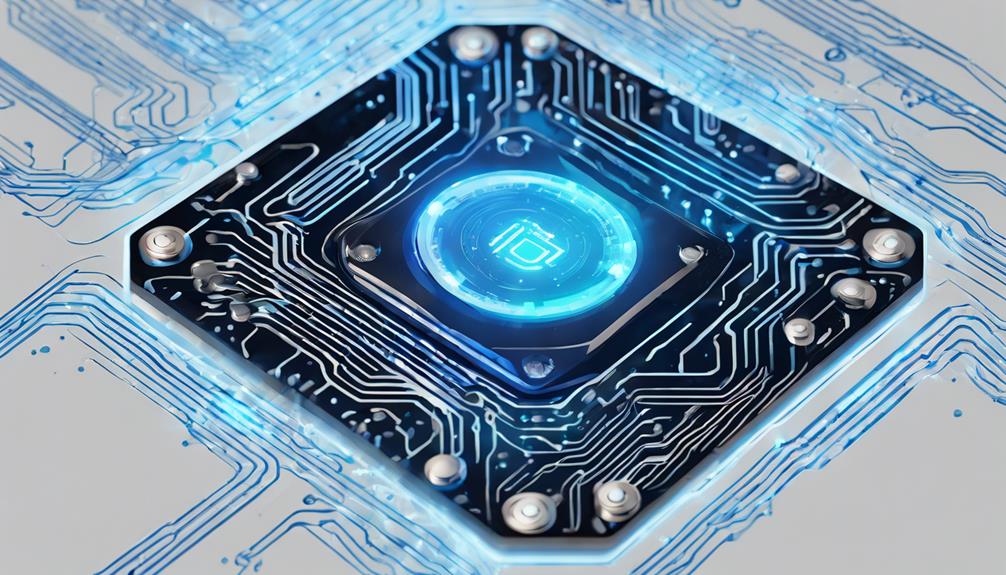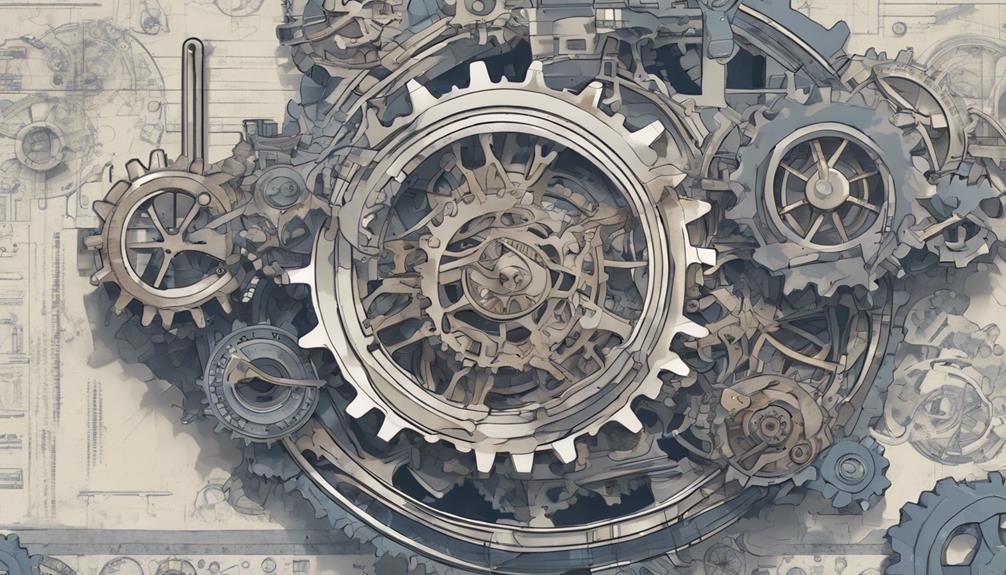In high-speed signal layout design, attention to detail is essential, as minor deviations can compromise signal integrity and system performance. Signal frequency, rise and fall times, and differential pairs all impact signal integrity. Proper trace routing, impedance control, and via placement are key considerations. Additionally, minimizing delay skew and crosstalk through length matching, proper spacing, and shielding is important. By following best practices for PCB layout, via placement, and component selection, designers can achieve excellent high-speed performance. Further exploration of these critical factors is necessary to guarantee reliable and efficient high-speed signal transmission.
Key Takeaways
- Signals above 50 MHz require meticulous attention to detail to maintain signal integrity and system performance.
- Proper trace routing, impedance control, and component placement are vital for high-speed signal layout design.
- Implementing controlled impedance traces, length matching, and proper spacing minimizes delay skew and crosstalk.
- Via placement in a grid pattern with adequate spacing and symmetric arrangement ensures uniform current distribution and impedance matching.
- Maintaining controlled impedance traces, separating analog and digital ground planes, and planning for test points are crucial for optimal high-speed performance.
Key Considerations for High-Speed Signals
In high-speed signal design, signals above 50 MHz demand meticulous attention to detail. Even slight deviations in layout design can greatly compromise signal integrity and overall system performance.
To guarantee top-notch high-speed PCB design, it is essential to take into account the impact of rise and fall times on signal integrity. Proper trace routing, impedance control, and reference to a stable ground plane are vital to minimize signal reflections and degradation.
Differential pairs should be used to reduce electromagnetic interference and crosstalk. Controlled impedance routing is critical to maintain signal integrity, and PCB layout must be carefully planned to avoid impedance variations.
A solid ground plane provides a stable reference point, enabling efficient return paths for high-speed signals. By adhering to these key considerations, designers can optimize high-speed signal design, ensuring reliable signal transmission and maintaining system performance.
Optimizing PCB Layout for Signal Integrity

Effective PCB layout design for high-speed signals demands meticulous attention to impedance control, component placement, and signal routing to guarantee signal integrity and minimize degradation.
To optimize PCB layout for signal integrity, it is essential to implement controlled impedance traces, guaranteeing uniform impedance and separation distances to reduce crosstalk and signal reflections.
- Implement controlled impedance traces to maintain uniform impedance
- Place components near reference planes to minimize signal degradation and interference
- Utilize simulation tools for signal integrity analysis to validate compliance with design rules and constraints
- Adhere to best practices, such as keeping high-speed traces short and direct, to enhance signal quality and reliability
Minimizing Delay Skew and Crosstalk

What critical role do delay skew and crosstalk play in compromising signal integrity, and how can they be mitigated in high-speed signal layout design? Delay skew and crosstalk are two primary culprits that can greatly degrade signal integrity, leading to timing errors and compromised system performance.
| Technique | Description |
|---|---|
| Length Matching | Guarantees equal propagation times for signals in differential pairs to prevent delay skew |
| Proper Spacing | Maintains sufficient distance between high-speed signals to prevent electromagnetic interference and crosstalk |
| Shielding | Utilizes ground planes and differential routing to minimize crosstalk |
| Impedance Matching | Prevents impedance mismatches that can exacerbate delay skew and crosstalk |
To maintain signal integrity, it is crucial to address delay skew and crosstalk in high-speed layouts. By implementing length matching techniques, maintaining proper spacing between signals, and utilizing shielding methods, designers can minimize the impact of delay skew and crosstalk. By doing so, they can ensure reliable and accurate signal transmission, ultimately enhancing the overall performance of electronic systems.
Best Practices for Via Placement

Proper via placement is critical in high-speed signal layout design, as it greatly impacts signal integrity, power distribution, and electromagnetic interference (EMI) in printed circuit boards (PCBs). In high-speed layouts, via placement can make or break the performance of the circuit. To guarantee top-notch performance, it is essential to follow best practices for via placement.
Some key considerations for via placement include:
- Place vias in a grid pattern to secure uniform current distribution and prevent hotspots in power and ground planes.
- Adequately space vias to avoid impedance variations and maintain signal integrity in high-speed layouts.
- Symmetrically arrange vias to eliminate impedance mismatches and ensure consistent signal performance.
- Carefully consider via placement between differential pairs to minimize signal distortion and maintain signal integrity.
Achieving Optimal High-Speed Performance

To achieve peak high-speed performance in printed circuit board (PCB) designs, maintaining controlled impedance traces throughout the layout is essential for ensuring signal integrity and mitigating electromagnetic interference (EMI). This is critical for reliable transmission of high-speed signals.
In addition, proper ground plane separation techniques, such as keeping analog and digital ground planes separate, are essential for signal integrity. Implementing virtual split layouts for ground planes helps in efficiently managing current flow and reducing EMI.
Moreover, component width selection plays a significant role in ensuring stable high-speed performance in PCB designs. Proper planning for test points in the schematic phase enhances the performance of high-speed signals during testing and troubleshooting.
Frequently Asked Questions
What Are the Considerations for High Speed Design?
When venturing into the domain of high-speed design, several critical considerations come into play. Paramount among these are impedance control, signal integrity, and crosstalk mitigation. By carefully managing layer stackup, component placement, and routing strategies, designers can effectively mitigate signal degradation and guarantee peak performance.
Additionally, factors such as signal rise and fall times, transmission line effects, and EMI must be carefully addressed to secure reliable high-speed operation.
What Is Crucial for High Speed Design?
Essential for high-speed design is the synergy of multiple factors. Proper layer stackup, component placement, and routing strategies form the foundation.
Adherence to design rules and managing impedance mismatches, crosstalk, and signal integrity challenges are also important. Understanding the impact of interferences on signal purity is necessary.
What Are the Primary Considerations in PCB Layout Design for High Speed Interfaces?
'Cut to the chase' when it comes to high-speed PCB layout design, and prioritize impedance control, signal integrity, and routing strategies to guarantee peak performance.
The primary considerations for high-speed interfaces are maintaining signal integrity, managing impedance, and minimizing signal degradation through proper layer stackup, controlled impedance traces, and strategic component placement.
What Is the 3h Rule in PCB Design?
The 3h rule in PCB design stipulates that the minimum distance between high-speed signal traces should be at least three times the height of the PCB stack-up.
This rule is essential for maintaining signal integrity by minimizing crosstalk and signal interference between traces, thereby reducing the risk of signal degradation or data errors.


